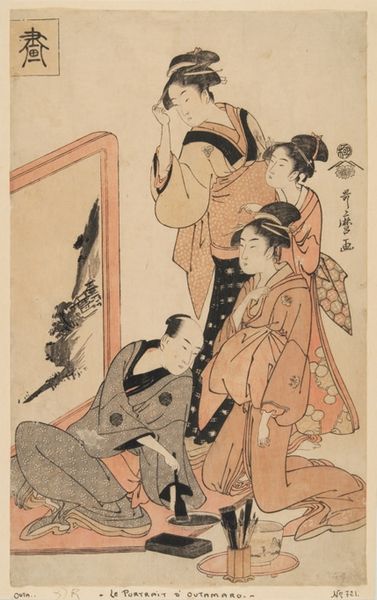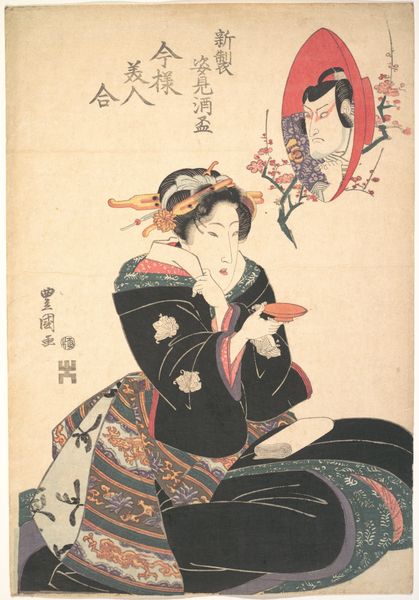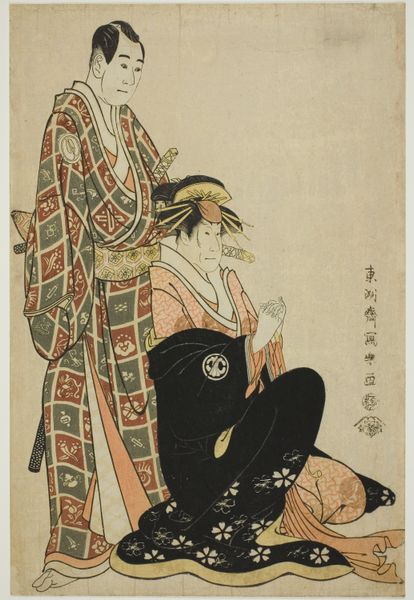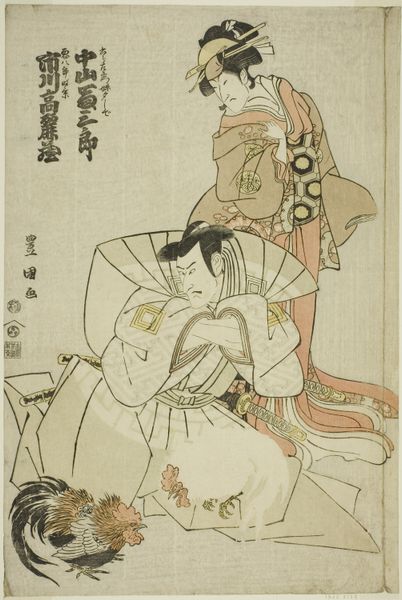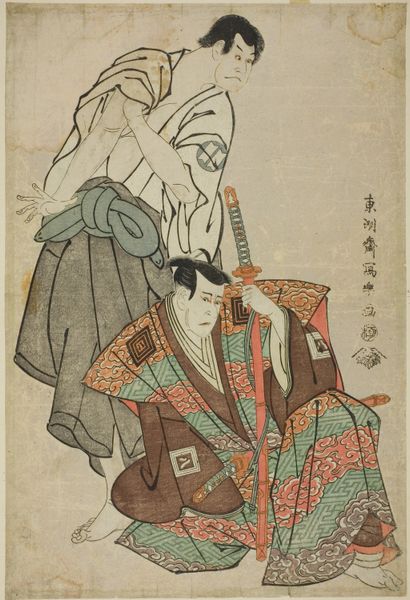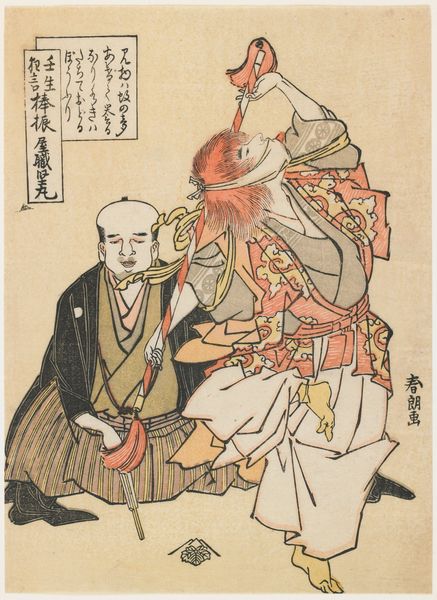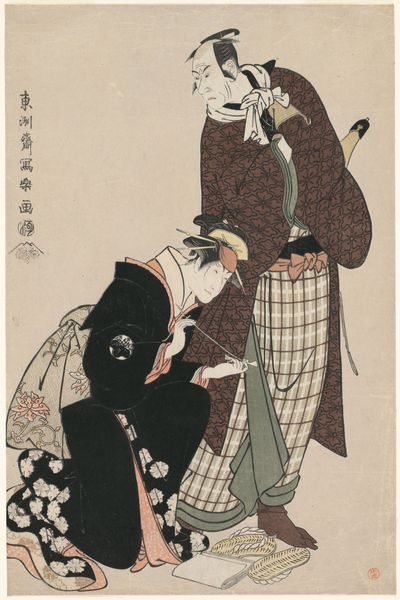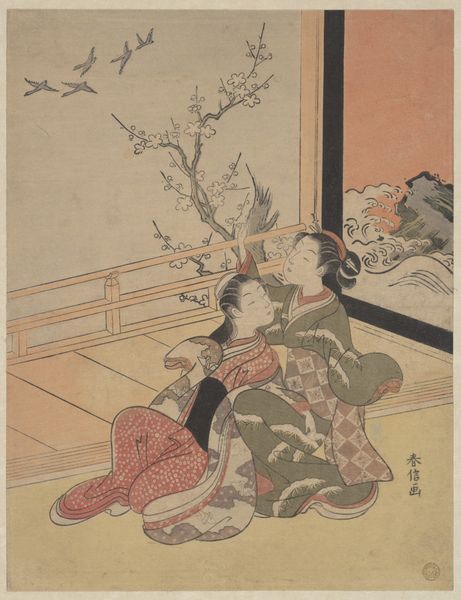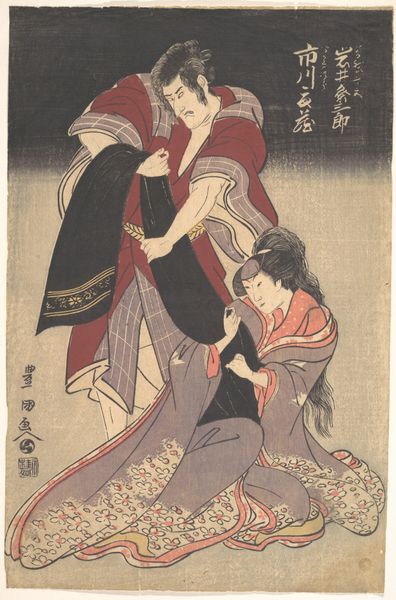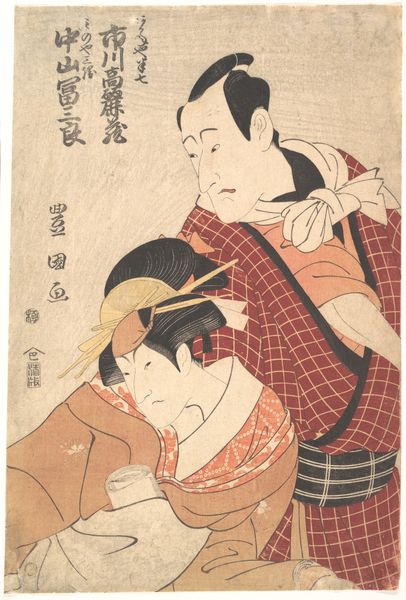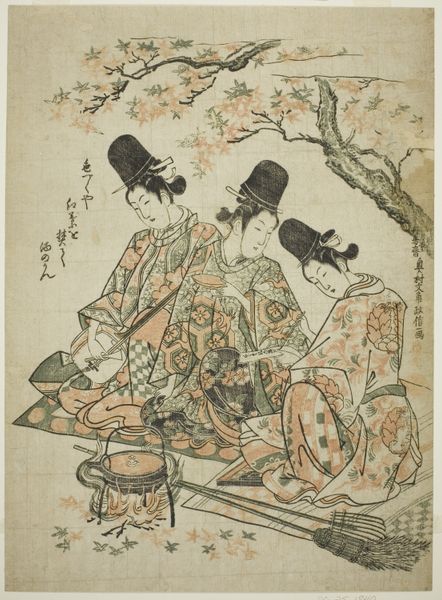
Ichikawa Komazō III in the Role of Kameō with Iwai Kumesaburō in the Role of Kameō's Wife, Oyasu, from the Play Shunkan futatsu omokage 1798 - 1799
0:00
0:00
print, woodblock-print
#
narrative-art
# print
#
asian-art
#
ukiyo-e
#
figuration
#
woodblock-print
#
men
Dimensions: H. 15 in. (38.1 cm); W. 9 5/8 in. (24.4 cm)
Copyright: Public Domain
Curator: What strikes me immediately is the sheer physicality depicted here. We're looking at "Ichikawa Komazō III in the Role of Kameō with Iwai Kumesaburō in the Role of Kameō's Wife, Oyasu, from the Play Shunkan futatsu omokage," a woodblock print by Utagawa Toyokuni I, dating from 1798-1799. The figure wielding the hammer! It practically vibrates off the page. Editor: The imagery does indeed jump out. There's the symbolism of the teacup that the wife offers and how it relates to domestic tranquility alongside hard labor. Even the color palettes—the earthy browns against the bolder red—seem laden with meaning. What can you tell me about the actual printmaking process? Curator: Ukiyo-e prints were very much a collaborative effort. Artists designed the image, but skilled block cutters and printers were vital in translating that design. The choice of wood, the precision of the carving, and the layering of pigments – all dictated the final product and, thus, our interpretation. The red, for example, might have been achieved using a dye derived from safflower, a costly and prized material. Editor: And how do these elements tie into the story of the play itself? Because it looks to me like a symbolic tableau of devotion in adversity. He's toiling; she brings him solace in the form of tea. Their roles are rigidly defined, but their expressions also convey something else. Curator: Absolutely! The print collapses specific performances within a longer narrative, preserving memory, or better said memorializing cultural memory. By referencing certain popular narratives and playing on existing aesthetic trends in woodblock production, a feedback loop of meanings were established among the Japanese culture during that time. Editor: So the print is acting almost like an advertisement then. Do you find this example, where we get such emphasis on materials and labor, transcends mere commercial purposes? Curator: Precisely. Consider the dissemination of ukiyo-e prints within the context of Edo period Japan— the growing merchant class, the rise of Kabuki theater, and print culture were integral aspects of cultural production and dissemination. While definitely tied to popular entertainment, prints like these played a key role in shaping tastes and, maybe even solidifying social values. Editor: It enriches my viewing, seeing not just an image, but a reflection of its social circumstances and symbolic context. Curator: Exactly, knowing about materials and how images operate together with stories opens new possibilities to understand the emotional world within visual expressions.
Comments
No comments
Be the first to comment and join the conversation on the ultimate creative platform.
